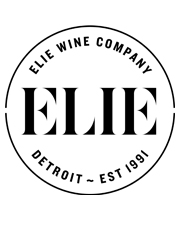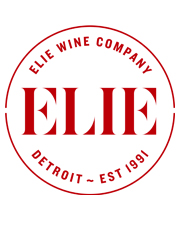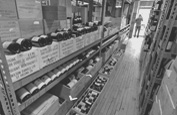A Grape of Memory: Ten Provençal Producers Show How Bandol’s Mourvèdre Evolves into Wines of Haunting Complexity and Depths That Only Time Delivers • Future Classics in a Tuck-Away Pack 6 Bottles – $299 (Vintages 2021-2017)
Conventional wisdom has taught us that wine grapes fare best in places where nothing else will grow; rocky, water-starved soil on precipitous hillsides make vine roots work harder, ramifying and branching off in a search of nutrients and, in consequence, producing small grapes loaded with character.
Cue Bandol, the sea-and-sun-kissed region along the French Riviera which is not only good country for grapes, it’s good country for the soul.
Made up of eight wine-loving communes surrounding a cozy fishing village, Bandol breaks the Provençal mold by producing red wines that not only outstrip the region’s legendary rosé, but make up the majority of the appellation’s output. In part that’s due to the ability of Bandol vignerons to push Mourvèdre—generally treated as a blending grape in the Côtes du Rhône and Châteauneuf-du-Pape —to superlative new heights.
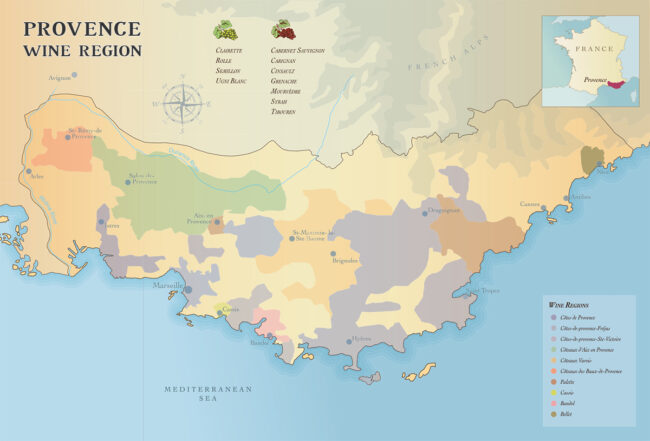
Bandol: Where Land Meets the Mediterranean Sea
It may be impossible to find a region where the winemaking pedigree is more impressive; Phoenicians were fermenting grapes here 2500 years ago, long before the Romans showed up and named the wine ‘Massilia.’ As the late-afternoon Bandol heat sends wafts of violet, black pepper and thyme into the air above an azure sea, it’s easy to see why this seacoast resort town has been both a destination and a home since prehistory.
About an hour’s drive east from Marseille, the microclimate that sets Bandol apart from the rest of Provence is the result of altitude and its natural amphitheater; the vines are planted on steep hills where the soils are composed of limestone, red clay and silica sand and the vines are protected from the harshest winds by the natural bowl formed in the low coastal mountain ranges between La Ciotat and Toulon. This combination of features makes it ideal for ripening finicky, late-budding Mourvèdre, which might otherwise be challenged by the proximity of the Mediterranean.
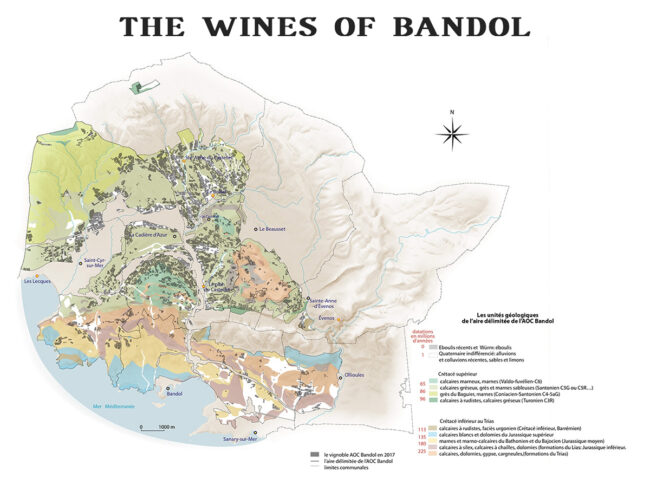
Bandol’s Signature Grape: Mourvèdre, Slow Burn
The ecological niche that makes Bandol’s Mourvèdre unparalleled in the world is the work of both man and nature. While Syrah and Grenache are planted on Bandol’s cooler, north-facing slopes, Mourvèdre is strategically placed on warmer, south-facing slopes to help nudge along the ripening process—the varietal is notorious for the time it needs to reach the level of phenolic ripeness required for the big, brooding, spicy, age-worthy reds for which the appellation is famous. Even so, the vines cling desperately to the slopes, making mechanical harvesting impossible. But hand-gathering is preferred in any case, ensuring a finer selection of grapes, in better condition and with smaller yields.
Meanwhile, the variety itself seems custom-designed for Bandol; Mourvèdre is an upright bush vine that forms a short stumpy trunk that will stand up to the Mistral winds. Bandol growers give preference to goblet pruning in order to reduce the amount of foliage and to help the low-producing vine bear triangular bunches with small, tight grapes bunches.
The Vigneron’s Savoir-Faire: Hard Road to Balance
To say that Bandol’s climate is ideal for Mourvèdre is not to say that growers have a smooth path to success: On the contrary, constant vigilance is table-stakes for successful winemaking operations; understanding the AOP regulations is a task in itself; following them is that much harder. For example, young vines intended for the production of red wines are not allowed to contribute until the eighth leaf has appeared on their trunk, and from that point, during every stage of cultivation, yields are controlled. Vine density must be at least 5,000 per hectare while spur pruning (leaving two-bud spurs on the trunk) is required. Chaptalization (adding sugar to unfermented grapes to increase the wine’s alcohol content) is banned, as is ‘any enrichment or concentration operation, even within the limits of the legal prescriptions in force.’
Things don’t get any easier in the cellar. Technology may have lightened certain workloads, allowing better control and new progress in quality, but the old ways reign supreme. Maturation is an essential factor in red wine production, and here, the vigneron’s know-how is irreplaceable. The primary goal in producing Bandol is to achieve balance through a process of slow, natural stabilization, and at each stage, wines are carefully selected and tasted and are accepted only if they meet the requirements of their status. A blind tasting test is carried out in June of the first year following harvest to allow the wine growers to examine the evolution of the vintage. It’s considered a ‘mock exam’ from which each wine grower learns critical lessons.
Future Classics in a Tuck-Away Pack
6 Bottles – $299 (Vintages 2021-2017)
Buying wine with the understanding that it will improve over time is like investing in stock futures: An examination of all the factors involved in the complicated process of wine maturity is vital. Not every Bandol from these four vintages are guaranteed longevity, but the ones we have assembled in this grouping have a high probability of improvement over the years—the result of terroir, the specifics of the growing season, and most importantly, the skill of the winemaker. Our trust in the latter is, though experience, impeccable.
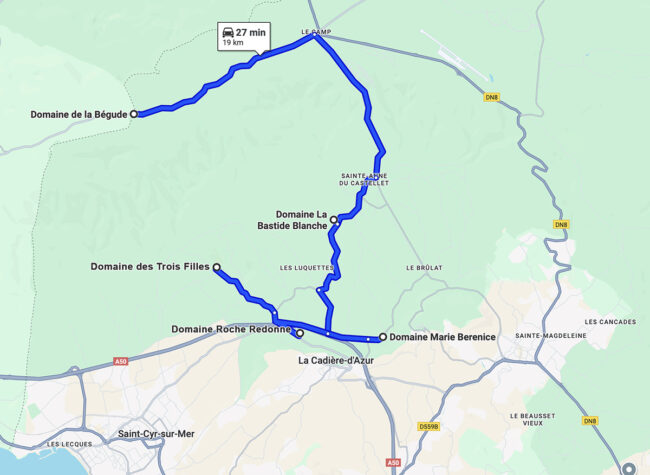
Notes on The Vintages
2021 — Bandol in Minor Key
Subtle, restrained, nuanced, savory and earthy.
——————-
An up and down vintage by all accounts, with late frost, early rain, middle-August heat and a quick spike in potential alcohol created conditions that produced Bandol reds with less potency than 2020, but plenty of nuance—savory herbs, iron and earth. Yields were down 20% to 25% from the previous harvest, which was already small, but the wine shows the potential for considerable improvement in the cellar.
2020 — Bandol in Full Voice
Bold, complex, powerful, built to last.
——————-
Significant rain in June and July allowed most of Bandol’s vines to skate through an extremely hot August without much stress. Grape sugars skyrocketed, however, necessitating a careful and fairly rapid harvest. Reds from this vintage show a signature reduction reminiscent of wines from the 1990s, adding complexity and signaling wine that will age well.
2019 — Bandol in Deep Harmony
Rich, resonant, firmly structured, long aging.
——————-
After a humid 2018, Bandol dried out, with hot conditions throughout the summer, significant sunshine and the welcome return of the Mistral wind helping to prevent mildew and concentrating juice behind thick Mourvèdre skins. These wines are rich and deep, exhibiting firm, ripe tannins and the capacity for long aging.
2017 — Bandol in Allegro
Quick tempo, early harvest energy, bright and brisk.
——————-
The third year of summer drought in Bandol meant small berries, small bunches and reduced yields; the harvest was 18% down from 2016. The early season and bright, hot summer also meant an extraordinarily early harvest, beginning August 11th in some places, and at least two weeks ahead of the previous average for warm or hot years. Tempier in Bandol began harvest on August 22nd and finished on September 12th, and was very pleased with the quality, suggesting that the Mistral had been critical in ensuring freshness in the fruit, and that the winter rains had also kept the vines healthy during the long, hot summer.
Domaine Marie Bérénic
Bandol at Its Primal Best
The first time Lyle Railsback, wine importer at France+Western tasted a bottle of Domaine Marie Bérénice, he exclaimed, “This Bandol Rouge has the aromas of Mourvèdre as thrilling as anything in Provence. And as exciting as older, cellared examples of Bandol can be there is something so captivating and primal about drinking a Bandol red on release, in its youth.”
As Domaine de Trois Filles was named for the daughters of the original owner, so is Domaine Marie Bérénice a tribute to Damien Roux’s daughter. Marie Bérénice was born into a long line of grape growers in Bandol, although historically the family sold their fruit to other estates. Damien, who made wine for another winery in the area, decided to begin releasing under his own label. The family farm, between the villages of La Cadière and Castellet and only a stone’s throw from the fabled beaches of Saint-Tropez, consists of 35 acres of clay and limestone terraces, where the work, done by hand, is certified organic.
In the cellar, Damien vinifies using wild yeasts and relies on long macerations. He ages his reds in large foudres for eighteen months before bottling without any fining or filtration.
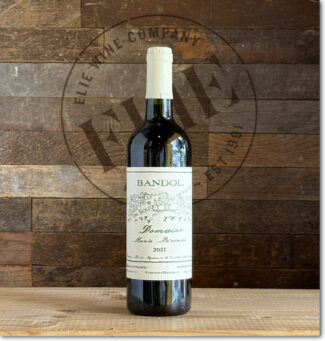 1 Domaine Marie Bérénice, 2021 Bandol ($33)
1 Domaine Marie Bérénice, 2021 Bandol ($33)
90% Mourvèdre and 10% Grenache. Pie spices and leather lend a savory profile while the fruit is filled in with vibrant notes of cranberry, blackberry and cassis, with cedar, and tobacco appearing on the finish.
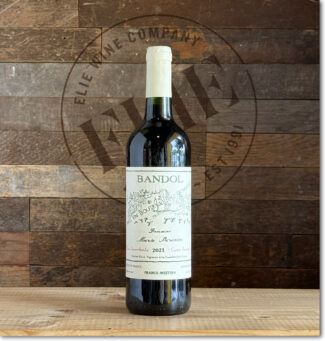 2 Domaine Marie Bérénice ‘Les Faremberts, Cuvée Simone’, 2021 Bandol ($36)
2 Domaine Marie Bérénice ‘Les Faremberts, Cuvée Simone’, 2021 Bandol ($36)
A collaboration between importer Lyle Railsback and Marie Bérénice’s winemaker Damien Roux, representing Damien’s oldest vines in a lieu dit known officially as ‘Les Faremberts’ but locally as ‘Chagall’ as the vineyard itself surrounds a family homestead owned by artist Marc Chagall. 90% Mourvèdre, 10% Grenache, the wine underwent a long maceration followed by 18 months in large oak barrels. A great, old-style Bandol showing cedar box, baking spices, blueberries and leather.
Domaine des Trois Filles
Bandol Takes Root in a New Generation
Audrey Arlon, current winemaker at Domaine des Trois Filles is one of the filles. The estate was named for her and her two sisters (Léonie and Justine) by their parents. Now, after having learned the craft and honed her skills at Domaine Ott and Domaine du Gros ‘Noré, Audrey has taken over her family’s vines in La Cadière-d’Azur.
“We farm 22 acres of old, goblet-trained vines co-planted with rye, fava beans, clover and radish sprout in between the rows,” Audrey explains. “This begins the process to combat global warming and keep the soil healthy. In the spring, we fold the cover crops into the earth to protect the soil while keeping humidity and maintaining a low temperature in the increasingly hot weather of Southern France. Giving natural aeration to the roots and better development of earthworms, we can to limit the spread of weeds, create greater biodiversity, and promote microbial life in the soil.”
Trois Filles is a family affair, and with the three sisters at the helm, it presents some interesting challenges. Audrey admits that it can be a struggle to balance the demands of motherhood with winemaking: “There are times, such as harvest, that require one’s full and undivided attention. And yet, from a physical point of view today, the evolution of the equipment allows us to force ourselves less, so we can do almost anything.”
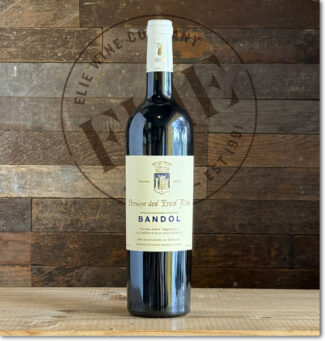 3 Domaine des Trois Filles, 2020 Bandol ($33)
3 Domaine des Trois Filles, 2020 Bandol ($33)
75% Mourvèdre, 20% Grenache and 5% Cinsault from goblet vines grown on a clay-limestone hillside. Hand harvested into crates, gently macerated with native fermentation in stainless steel and aged in barrels for 18 months. A muscular core of earthy dark fruit is highlighted by classic leather, garrigue, underbrush and sweet black raspberry notes.
Domaine Roche Redonne
Bandol Anchored in the Hills, Bathed in Garrigue
Founded in 1979 by Henri and Geneviève Tournier, Roche Redonne is situated among the Bandol foothills surrounded by olive groves and garrigue scrub just outside the pretty village of La Cadière d’Azur.
The 30-acre vineyard is farmed using organic methods and the vines now average more than 40 years in age, with the youngest vines at 20 years and the oldest at 60. The yields are kept low, and, in fitting with the appellation laws, the steeply hilled vineyards is harvested by hand.
Their son, Guilhem Tournier, has followed in their footsteps, creating his own estate (Château Guilhem Tournier) in 2004 and is now fully certified organic and he uses biodynamic methods.
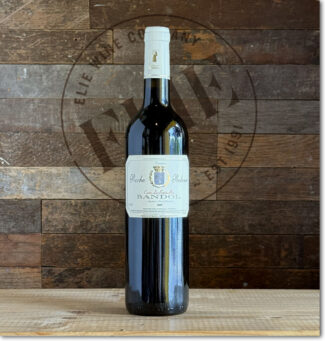 4 Domaine Roche Redonne ‘Cuvée Les Bartavelles’, 2019 Bandol ($71)
4 Domaine Roche Redonne ‘Cuvée Les Bartavelles’, 2019 Bandol ($71)
‘Bartavelles’ means ‘Royal Partridges,’ and it certainly presents a noble expression: 95% Mourvèdre and 5% Grenache grown on a blue marl base with a layer of clay on top. The wine offers a fruity aroma with a hint of smoke; the palate is filled with cherry compote and sweet spices, leading to a full, textured finish of exceptional length.
Domaine La Bastide Blanche
Bandol on the Rocks, at the Edge of the Sea
Michel and Louis Bronzo purchased Bastide Blanche in the ‘70s in the belief that the terroir could produce a wine to rival those of Châteauneuf-du-Pape. With that in mind, the brothers planted Carignane, Cinsault, Clairette, Grenache, Mourvèdre and Syrah. Vintage 1993 proved to be their breakaway year, putting both Bandol and themselves on the wine map. The estate is located in the foothills of Sainte-Baume Mountain, five miles from the Mediterranean Sea on land that is primarily limestone scree.
Bastide Blanche has been certified Biodynamic since 2020. According to Louis Bronzo, “True to our terroir, all our wines are organic and Biodyvin certified. To preserve nature and protect everyone’s health, we work tirelessly to improve our farming practices. We owe the earth our loyalty, especially since we have blessed with our environment, at the foot of the Sainte-Baume mountain, just a few kilometers from the Mediterranean Sea. Our soil is predominantly limestone, which is ideal for our dozen grape varieties.”
Michel adds, “As is required of Bandol producers, all our grapes are harvested by hand—a practice that makes it possible to finely sort the bunches during harvest and to better protect the fruit until it reaches the cellar.”
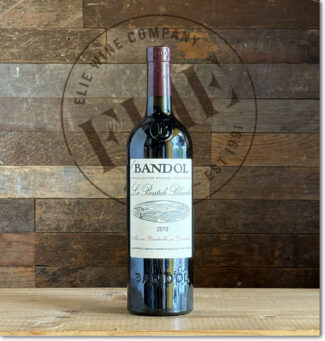 5 Domaine La Bastide Blanche, 2019 Bandol ($34)
5 Domaine La Bastide Blanche, 2019 Bandol ($34)
Predominantly Mourvèdre (around 73%) with smaller contributions by Grenache, Cinsault, Syrah and Carignan, the wine is Bandol-big with crushed blackberries, raspberries and warm cherry pie. Lively, mouthwatering and concentrated with great mid-palate intensity.
Domaine de La Bégude
Bandol on High Ground
Located at the highest point in Bandol (1400 feet) La Bégude was once a stopover inn on the road from Marseille to Toulon, a shelter for the night where you could find ‘beguda’—the local Provençal wine with a name drawn from the Catalan language.
The Roulleau family purchased Domaine de La Bégude in 2022, making them only the fifth family to own the estate since the Middle Ages. Appointing Laurent Fortin as Managing Director. According to Fortin, the goal in overseeing the estate is “To keep the same pioneering spirit while daring to break the codes to offer a unique vision of wine in the heart of this exceptional vineyard.”
Fortin, who has managed Roulleau-owned Château Dauzac since 2016, says, “The Roulleau family fell in love with this site, these exceptional terroirs set in the garrigue and these wines with strong personality. We are following in the footsteps of the Tari family to make La Bégude shine at the top of the Bandol appellation. The challenge is exciting, in the continuity of Château Dauzac, to build a family group of inspired vineyards.”
The synergy between the Tari and Roulleau clans has been immediately apparent, both in viticultural dynamism and in the spirit that shares the common value of respect for nature and biodiversity. Under the Tari family, Bégude was a place of natural agro-forestry, home to the International Conservatory of Mourvèdre, which farms an exceptional vine collection of 150 Mourvèdre varieties, the largest in the world. Going forward, the intention is to reinforce and maintain this collection.
The estate itself encompasses more than 1200 acres, of which 75 are under vine—65% Mourvèdre, 25% Grenache and 10% Cinsault, now at an average age of 25 years. The vineyards sit at elevations exceeding 1300 feet, and as such, are among the highest in the appellation. The plan is to increase the cultivation to 100 acres over the next few years and to continue to produce Bégude’s hallmark rich, acidic, fruit-driven wines that develop in the cellar with elegance. The Roulleaus are proud to age their own wines in the old chapel of Miséricorde of Conil, dating from the 7th century—a vestige of the presence of the Abbey of Saint Victor on the estate.
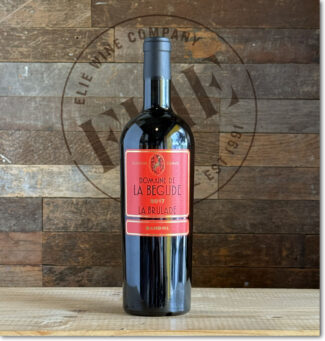 6 Domaine de la Bégude ‘La Brulade’, 2017 Bandol ($99)
6 Domaine de la Bégude ‘La Brulade’, 2017 Bandol ($99)
95% Mourvèdre, 5% Grenache grown on clay marl. ‘La Brulade’ is the name of a select slope located at an altitude of 1300 feet overlooking the Mediterranean Sea between La Baie d’Amour in the south and La Sainte Baume in the north, one of the highest parcels in Bandol; the wine is only made in exceptional vintages. With 24 months of foudre aging behind firm and tannic fruit, the wine is dark and brooding and shows blackberry, boysenberry, licorice and peppery garrigue. It should continue to develop nuance for years to come.
Bandol Matured, Time Realized
Superlative winemaking involves a formula that’s part science and part soul. It’s not a stretch to liken the process to a recipe, and so a comparison of a great wine with the steps required to produce a perfectly prepared, top-end Wagyu ribeye steak is appropriate. Like wine, an exceptional piece of beef traces its origins to the earth itself: Wagyu cattle are pampered from birth, fed a high-protein diet, often massaged and given beer to encourage marbling.
Likewise, the vineyards that produce top quality wines enjoy both breeding and babying; adding to the natural elements is a cycle of biodynamics to mollycoddle microbic life, with the correct attention paid to moisture, food and pruning. While in the growth stage, all possible care is taken so that the vines do not fall prey to disease or mismanagement.
The same holds true for the steer. And for both, some aging is required before premium flavor is said to be reached. For the Wagyu, this may be as long as four hundred days at 34°F; for the aged Bandol’s in this week’s package, the wine wettest behind the years is eight years old; the most mature, 15.
Of course, for both beef and bottle, the consumer is the ultimate benefactor and the decisive judge; the time the wine spends maturing toward an ‘ideal’ state is the time the steak spends over the flame. This is, of course, an optimal and somewhat measurable period depending on individual tastes, but a given consensus can certainly be formed and debated.
A gustatory exploration of these wine selections (which happen to pair very well with beef) bears witness to the evolution of Mourvèdre and Cinsault and to a lesser extent, Grenache and Syrah in Bandol’s changing climate. The sensory profile of this blend has developed a kaleidoscope of tertiary flavors and scent developments.
Provenance is guaranteed for these wines, of course, so you know that storage conditions have been optimal.
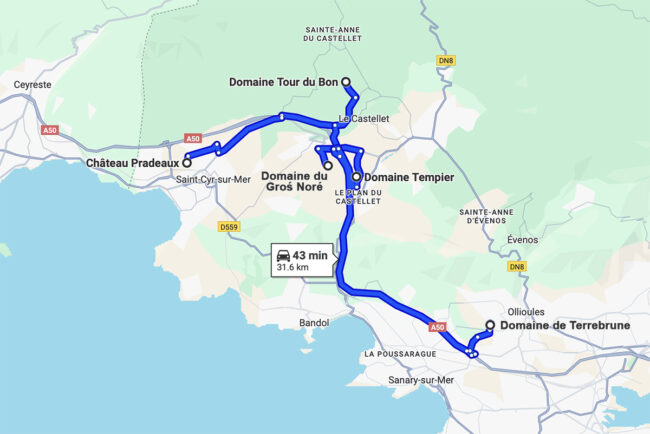
Notes on The Vintages
2016 — Bandol in Sustained Note
Concentration, freshness, built for endurance and the long haul.
——————-
Aside from a minor frost in April, the main growing-season challenge was drought: in Bandol, fewer than eight inches of rain throughout the entire season. The result was a reduction of yields of 10 to 30%. The quality of both white and (especially) red wines, though, was high since the summer heat was tempered by cool nights and the grapes retained fresh acidity, while the lowered yields provided impressive concentration of flavor. These are wines for the long haul.
2015 — Bandol in Allegretto
Balanced, graceful, approachable yet with poise.
——————-
The second wet winter in a row raised water tables to herald a warm, dry spring. Bud break took place earlier than usual and flowering went well; summer was generally warm but without excessive heat—the rain that fell on June 15th was helpful. The conditions of steady, tempered heat continued throughout August clear skies; Bandol reds are outstanding. Drink now, or hold for a few more years.
2013 — Bandol in Andante
Measured pace, delicacy, freshness, middle-weight charm.
——————-
After a long, cool and slow spring, the entire growing season—bud break, flowering, véraison and harvest—was about two weeks later than usual. There were a few hail storms in June, but the disease pressure of early summer gradually abated thanks to the Mistral as September approached. It was a good vintage for those who long for delicacy and freshness in white and rosé wines, but the reds tended to be middle-weight and are probably at their peak.
2011 — Bandol in Counterpoint
Contrasts resolved into structure, now showing maturity.
——————-
A dry, sunny spring led to ideal flowering, but the summer was uneven with a cool wet July, dry conditions from mid-August to mid-September. Then welcome rain fell followed by drying Mistral wind. Cool nights during harvest led to Bandols being particularly successful & structured; best required cellaring and are now coming into their own.
2010 — Bandol in Adagio
Late harvest, spice and finesse, graceful and nuanced.
——————-
Bandol saw more rainfall than recent years with sporadic flooding in June. Alternating sun/rain in October resulted in late, extended harvest led to Bandol reds with much spicy finesse and definition.
Château Pradeaux
Resolutely Old School
Situated on the outskirts of the town of Saint Cyr-sur-Mer, directly on the Mediterranean between Toulon and Marseilles, Château Pradeaux has been in the hands of the Portalis family since the French Revolution. In fact, Jean-Marie-Etienne Portalis helped draft the Napoleonic Code and assisted at the negotiation of the Concordat under Napoleon the First. Today, the domain is run by Cyrille Portalis, who continues to maintain the quality traditions of his forbears, assisted by his wife Magali, and their sons Etienne and Edouard. Although vineyards are planted almost exclusively to old-vine Mourvèdre, Château Pradeaux Bandol Rosé is composed of Cinsault as well.
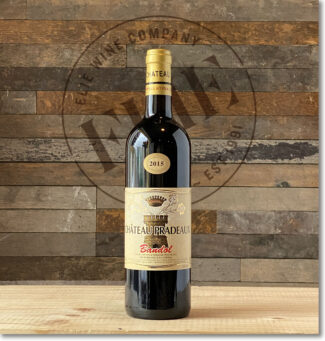 Château Pradeaux, 2015 Bandol ($67)
Château Pradeaux, 2015 Bandol ($67)
95% Mourvèdre, 5% Cinsault. In contrast to the three years preceding it, the 2015 vintage yielded a classic and deeply typical Pradeaux Bandol: a wine of grainy, spicy fruit, medium in weight but rippling with underlying power, and with an intoxicating aromatic overlay of violets and smoked meats.
Domaine de Terrebrune
Bandol’s Creed of Soil and Soul
Owning a winery may be the whispered dream of many sommeliers, but Georges Delille put his francs where his mouth was. In 1963, he bought an idyllic property in Ollioules, just east of Bandol, framed by the Mediterranean and the Big Brian mountain (Gros-Cerveau). The site was dotted with olive groves and scenic views, but no vines. Georges spent ten years renovating the property; he terraced hillsides, refashioned the masonry, replanted vineyards following the advice of Lucien Peyraud, designated soils to lie dormant and regenerate, and built a new cellar. In 1980, his son Reynald joined him after attending winemaking school, and together they launched their first bottled vintage of Domaine de Terrebrune, which Reynald named in honor of the rich, brown soils they farm.
There is plenty of diversity in this soil, though. Throughout Terrebrune’s 75 acres, beneath the layers of clay and earth, blue, fissured limestone is at work, lending a more noticeable minerality to the wine. Reynald’s personal credo of “Philosophy, rigor, and respect” is not a catch-phrase, but an ideology for living.
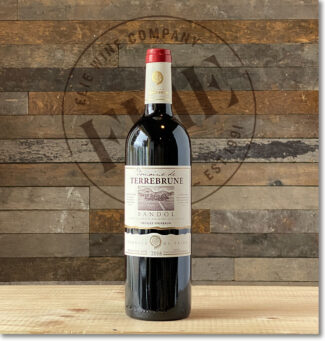 Domaine de Terrebrune, 2016 Bandol ($64)
Domaine de Terrebrune, 2016 Bandol ($64)
85% Mourvèdre, 10% Grenache, 5% Cinsault grown in limestone-pebbled brown clay above blue limestone bedrock. A full-bodied dose of Terrebrune terroir that should continue to mature and drink well for another two decades. Shows blackberries, dark cherries and cedar with hints of black pepper, game, licorice and dark chocolate.
Domaine Tempier
Bandol’s Single Vineyards, Etched in Stone
Robert Parker Jr. once referred to Domaine Tempier’s rosé as ‘the world’s greatest’, but the backstory isn’t bad either: Gifted the property by her father in 1936 upon her marriage to Lucien Peyraud, Lucie ‘Lulu’ Tempier found herself the owner of an active Bandol farm near Le Plan du Castellet that had been in the family since 1834. Her husband did extensive research into the terroir, and immediately halted the ongoing effort to tear out Mourvèdre vines in favor of higher-yielding varieties. In went new Mourvèdre, some of which are still producing.
With the assistance of neighboring vignerons, Lucien worked with the I.N.A.O. to establish Bandol as its own AOC, whereupon a large-scale replanting of Mourvèdre ensued across the region. As a result, Lucien will forever be celebrated as the Godfather of Bandol as well as the man who revived Mourvèdre to its former glory. Part of that glory includes their three single-vineyard releases, La Migoua, La Tourtin, and Cabassaou.
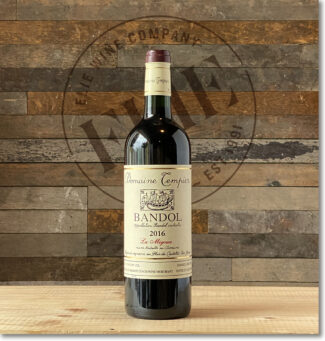 Domaine Tempier ‘La Migoua’, 2016 Bandol ($110)
Domaine Tempier ‘La Migoua’, 2016 Bandol ($110)
50% Mourvèdre, 20% Grenache, 26% Cinsault, 4% Syrah. La Migoua’s terroir mainly consists of heterogeneous clay that varies in color between red, ochre, and blue. Located at 885 feet, it is the highest altitude vineyard among all of Tempier’s sites. The 60 acres are bordered by garrigue and pine forest, and the grapes yield earthy, gamey wines. La Migoua has the smallest proportion of Mourvèdre in the blend, with the highest percentage of Grenache among the three cuvées.
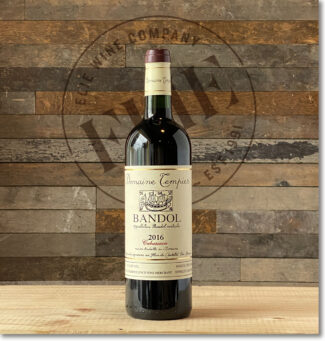 Domaine Tempier ‘Cabassaou’, 2016 Bandol ($160)
Domaine Tempier ‘Cabassaou’, 2016 Bandol ($160)
95% Mourvèdre, 4% Syrah, 1% Cinsault. At 4 acres, Cabassaou is the smallest Tempier vineyard, but with the oldest vines, now surpassing fifty years. It sits lower on the hillside where it is protected from the strength of the Mistral, enjoying temperate breezes and maximum sunshine, which is evidenced by is ripeness, density and power in the wines.
 Domaine Tempier ‘La Tourtine’, 2016 Bandol ($110)
Domaine Tempier ‘La Tourtine’, 2016 Bandol ($110)
80% Mourvèdre, 10% Grenache, 10% Cinsault. La Tourtine sits just above Cabassaou, where the soil is more homogeneous and rich with clay. As a result, the 30-acre La Tourtine produces powerful, tannic wines with gorgeous fruit character.
Domaine du Gros ‘Noré
Mourvèdre with Muscle
‘Gros’ means big, but as for ‘Noré, the translators are silent. But ‘big’ is the operative word anyway since it describes the proprietor in body, mind and legend. A former boxer and an avid hunter, Alain Pascal spent many years as a grower who sold his Bandol fruit to Domaine Ott and Château de Pibarnon. Along with his father, he bottled wine for family consumption only. But in 1997, after his father’s death, Alain launched Domaine du Groś Noré, and now, along with his brother Guy, bottles 5000 cases annually drawn from his forty acres of prime Cadière d’Azur vineyard.
The brothers work within the strictures of the region and often, beyond them, leaving the grapes to mature fully on the vine, lending great intensity to the fruit, and where appellation law demands that each blend includes at least 50% Mourvèdre, Alain ups the assemblage ante to 80%. The wine reflects the man; big and bold up front, while underneath is a core of character—depth, complexity, soul and finesse.
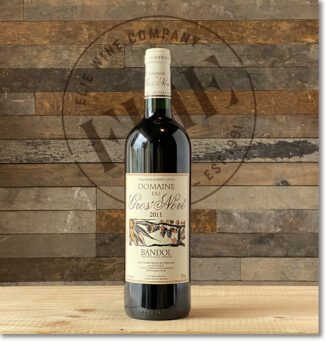 Domaine du Gros ‘Noré, 2011 Bandol ($98)
Domaine du Gros ‘Noré, 2011 Bandol ($98)
80% Mourvèdre, 15% Grenache, 5% Cinsault. The 35-acre vineyard contains vines of about 30 years in age. With a decade under its belt, the harsh tannins have softened and the wine has given over its aggressive fruit to cool notes of eucalyptus and fresh fennel.
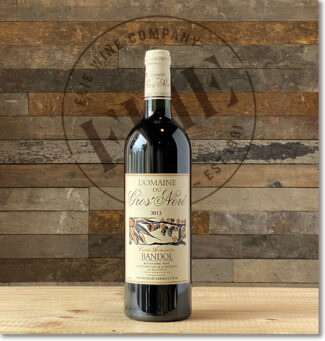 Domaine du Gros ‘Noré ‘Cuvée Antoinette’, 2013 Bandol ($120)
Domaine du Gros ‘Noré ‘Cuvée Antoinette’, 2013 Bandol ($120)
95% Mourvèdre, 5% Cinsault/Grenache. A beautiful blend with hints of underbrush and mushroom behind the dark red fruits and spice. The tannins are resolved and the acidity is suitably tempered.
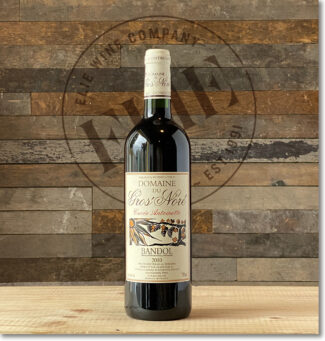 Domaine du Gros ‘Noré ‘Cuvée Antoinette’, 2010 Bandol ($130)
Domaine du Gros ‘Noré ‘Cuvée Antoinette’, 2010 Bandol ($130)
95% Mourvèdre, 5% Cinsault/Grenache from a small, two-acre vineyard. Black cherry and stewed plum notes remain to enliven balsa, tobacco, game, graphite and iron.
Domaine de la Tour du Bon
A Lyrical Bandol From the Heights
Sitting pretty at an elevation of 500 feet on 35 acres of red earth, clay, sand, and gravel over a sturdy limestone plateau in Le Brûlat du Castellet in the northwestern corner of Bandol, Domaine de la Tour du Bon is the culmination of commitment and sweat equity. The property, cleared by plough, has been a full-time farm since 1925 and has been worked by the Hocquard family since 1968. At the helm is Agnès Henry, who spent a number of years at the apron strings of a hired winemaker, but when she decided to approach the job herself, she found that her person expression of terroir was quite unique. The wines she claims as her own have both power and precision in equal measure, but effectively display the finesse and charm of her lyrically named vineyards, La Rémoise (The Dweller), Saint Ferréol (a local saint), Ensoleillade (Place Bathed in Sunshine), Clos des Aïeux (Clos of the Forefathers), l’Aire (the Aerie) and Bellevue (Beautiful View).
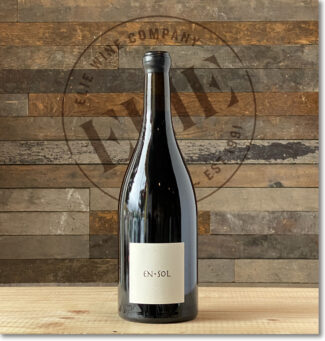 Domaine de La Tour du Bon ‘En Sol’, 2017 IGP Méditerranée ($85)
Domaine de La Tour du Bon ‘En Sol’, 2017 IGP Méditerranée ($85)
A half-acre site produces this extraordinary non-blended Mourvèdre, but since it breaks Bandol AOP regulations requiring a two-grape minimum, Henry has chosen to declassify the wine and release it as IGP Méditerranée. Grippy yet accessible tannins underscore flavors of ripe dark fruit, berries, scorched earth and a touch of smoked meat.
Notebook …
Mourvèdre in the Hot Seat: Bandol and the New Provence
For as long as anyone can remember, Bandol has been the outlier of Provence. Where the rest of the region turned its vineyards into a factory of pale, pool-side rosé, Bandol doubled down on Mourvèdre—a grape that doesn’t like to be rushed and doesn’t care if you’re impatient. It needed heat, sun, and time. Plenty of time.
That was then. Now, thanks to climate change, Bandol has more heat than it knows what to do with. Harvest comes weeks earlier, sugars spike, and bottles that once clocked in at 13% creep toward 15%. What used to be a wrestling match to ripen Mourvèdre has become a struggle to rein it in.
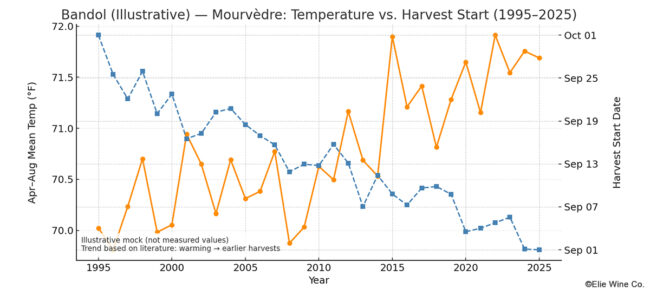
The New Reality Check
Bandol’s growers are staring down a paradox. Mourvèdre—once the slowpoke grape that barely made it to the finish line—is suddenly sprinting. Power is easy. Balance? That’s the endangered species. And the vineyards themselves are thirsty. Longer droughts stress even Bandol’s famously deep-rooted old vines, while the rain, when it does come, arrives as a downpour that chews up terraces and washes away topsoil.

Rosé Isn’t Immune
Even Bandol’s rosé, the muscular cousin of Provence’s whisper-pale styles, is shifting. Deeper colors, bigger fruit, the kind of aromatics that read more tropical cocktail than Provençal picnic. Some drinkers cheer the intensity; others miss the quiet elegance that once defined Bandol’s pinks.
Coping Mechanisms
Growers are improvising. Taller canopies to shade the bunches. North-facing sites and higher altitudes to slow things down. A little more Grenache or Cinsault in the blend to sand down Mourvèdre’s rough edges. Longer élevage in big foudres to bring back some discipline.
Bandol on the Edge
The question hanging over all of this: What does Bandol look like in 20 years? A Mediterranean powerhouse pushing 16% alcohol, or a region that manages to bend without breaking, reinventing itself while staying true to its granite-jawed personality?
Bandol has always been about tension—between sun and wind, fruit and tannin, pleasure and patience. Climate change doesn’t erase that tension; it cranks it up. The wines may be louder now, but they’re still telling the same story: Mourvèdre doesn’t compromise, and neither does Bandol.
- - -
Posted on 2025.09.18 in Bandol, France, Wine-Aid Packages, Provence
Featured Wines
- Notebook: A’Boudt Town
- Saturday Sips Wines
- Saturday Sips Review Club
- The Champagne Society
- Wine-Aid Packages
Wine Regions
Grape Varieties
Aglianico, Albarino, Albarín Tinto, Albillo, Aleatico, Alicante Bouschet, Aligote, Altesse, Arcos, Aubun, Auxerrois, Barbarossa, Beaune, Biancu Gentile, Bonarda, bourboulenc, Cabernet Sauvignon, Caladoc, Carignan, Chablis, Chenin Blanc, Cinsault, Clairette, Cortese, Corvinone, Cot, Counoise, Dolcetto, Fiano, folle Blanche, Frappato, Fumin, Gamay, Garganega, Garnacha Tintorera, Godello, Graciano, Grenache, Grenache Blanc, Grolleau, Groppello, Jacquère, Lladoner Pelut, Maconnais, Malbec, Malvasia, Malvasia Nera, manseng, Marcelan, Marselan, Marzemino, Melon de Bourgogne, Mencía, Merlot, Mondeuse, Montepulciano, Montònega, Mourv, Mourvèdre, Muscadelle, Muscat, Natural, Nebbiolo, Nero d'Avola, Niellucciu, Palomino, Patrimonio, Pecorino, Pedro Ximénez, Persan, Petit Verdot, Pineau d'Aunis, Pinot Auxerrois, Pouilly Fuisse, Pouilly Loche, Poulsard, Riesling, Rondinella, Rose, Rousanne, Roussanne, Sagrantino, Sangiovese, Sauvignon, Sciacarellu, Serine, Souson, Sylvaner, Syrah, Tannat, Tempranillo, Teroldego, Timorasso, Treixadura, trepat, Trousseau, Ugni Blanc, Viognier, Viura, Xarel-loWines & Events by Date
- September 2025
- August 2025
- July 2025
- June 2025
- May 2025
- April 2025
- March 2025
- February 2025
- January 2025
- December 2024
- November 2024
- October 2024
- September 2024
- August 2024
- July 2024
- June 2024
- May 2024
- April 2024
- March 2024
- February 2024
- January 2024
- December 2023
- November 2023
- October 2023
- September 2023
- August 2023
- July 2023
- June 2023
- May 2023
- April 2023
- March 2023
- February 2023
- January 2023
- December 2022
- November 2022
- October 2022
- September 2022
- August 2022
- July 2022
- June 2022
- May 2022
- April 2022
- March 2022
- February 2022
- January 2022
- December 2021
- November 2021
- October 2021
- September 2021
- August 2021
- July 2021
- June 2021
- May 2021
- April 2021
- March 2021
- February 2021
- January 2021
- December 2020
- November 2020
- October 2020
- September 2020
- August 2020
- July 2020
- June 2020
- May 2020
- April 2020
- March 2020
- February 2020
- January 2020
- December 2019
- November 2019
- October 2019
- September 2019
- August 2019
- July 2019
- June 2019
- May 2019
- April 2019
- March 2019
- February 2019
- January 2019
- December 2018
- November 2018
- October 2018
- September 2018
- August 2018
- July 2018
- June 2018
- May 2018
- April 2018
- March 2018
- February 2018
- January 2018
- December 2017
- November 2017
- October 2017
- September 2017
- August 2017
- July 2017
- June 2017
- May 2017
- April 2017
- March 2017
- February 2017
- January 2017
- December 2016
- November 2016
- October 2016
- September 2016
- August 2016
- July 2016
- June 2016
- May 2016
- April 2016
- March 2016
- February 2016
- January 2016
- December 2015
- November 2015
- October 2015
- September 2015
- August 2015
- July 2015
- June 2015
- May 2015
- April 2015
- March 2015
- February 2015
- January 2015
- December 2014
- November 2014
- October 2014
- September 2014
- August 2014
- July 2014
- June 2014
- April 2014
- March 2014
- February 2014
- January 2014
- December 2013
- November 2013
- October 2013
- September 2013
- August 2013
- July 2013
- June 2013
- May 2013
- April 2013
- March 2013
- February 2013
- January 2013
- December 2012
- November 2012
- October 2012
Search
